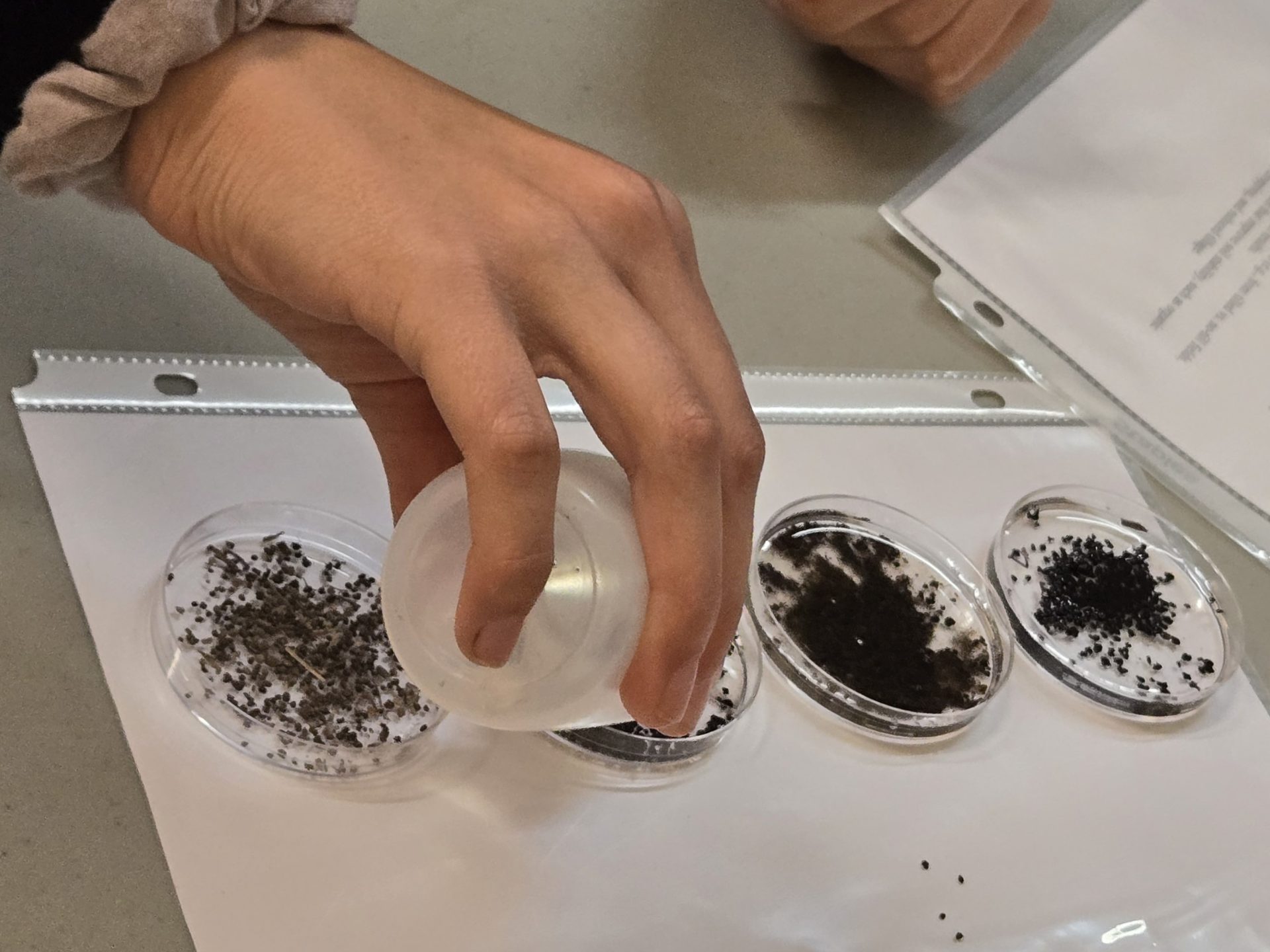Written by Dr. Yamily Zavala
Bringing the CARA Soil Health Lab to the Producers
If you can not come to our lab to learn, we will come to you” – Yamily Zavala
On July 30th, I had the opportunity to attend a full-day producer training workshop in Canora, Saskatchewan, hosted by Canadian Organic Growers’ Regenerative Organic Oats (ROO) program. The event brought together at 25 engaged producers; all committed to learning more about soil health and regenerative organic practices.
During my session, I focused on practical and science-based topics central to understanding and improving soil health. We began with the fundamentals: the importance of proper soil sampling and identifying visible signs of soil constraints using photo examples of “sick soils.” I walked participants through the lab’s soil sampling procedures and explained which soil health indicators are most meaningful when building a baseline to monitor changes over time.
We then explored the process of how we analyze soil health in the lab and interpreting results through our soil health reports. I shared stories and images illustrating how cover crops support soil aggregation, showing striking comparisons between fields with and without regenerative ground cover.
The highlight for many not only was our deep dive into the soil microbiome but also hands on evaluation of their own soil stability. I shared microscope images of bacteria, fungal hyphae, nematodes and even nematode-infecting fungi (trapping fungi nematode as well as nematophagous fungi)—offering a rare look into the microscopic life that drives soil health.
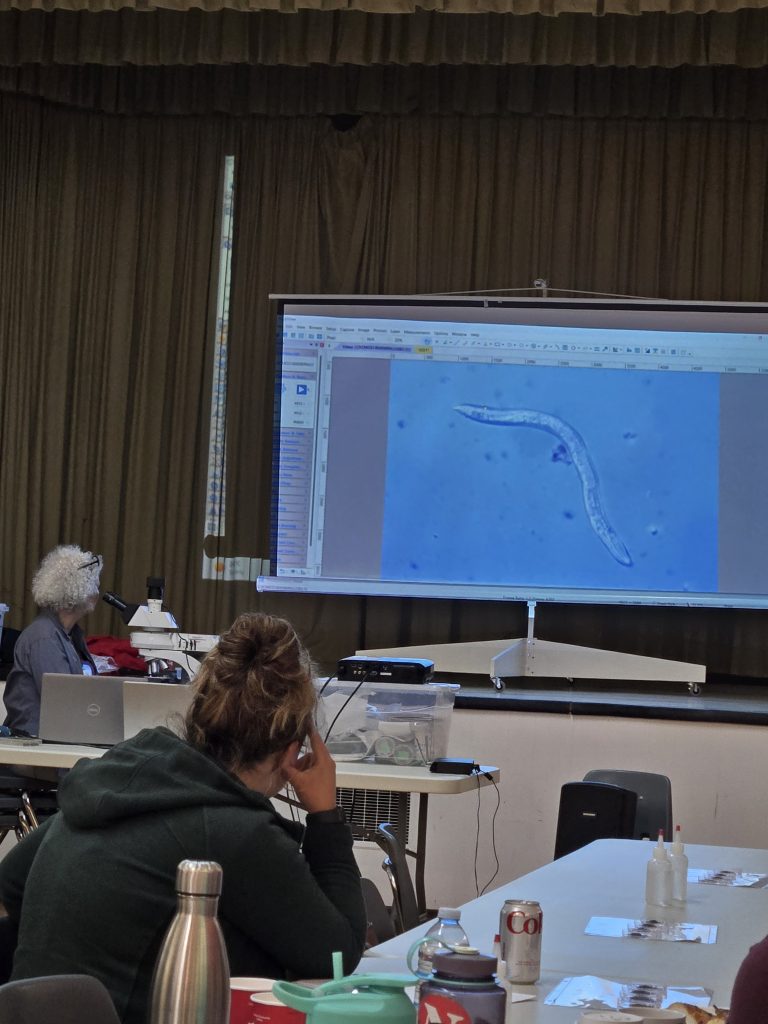
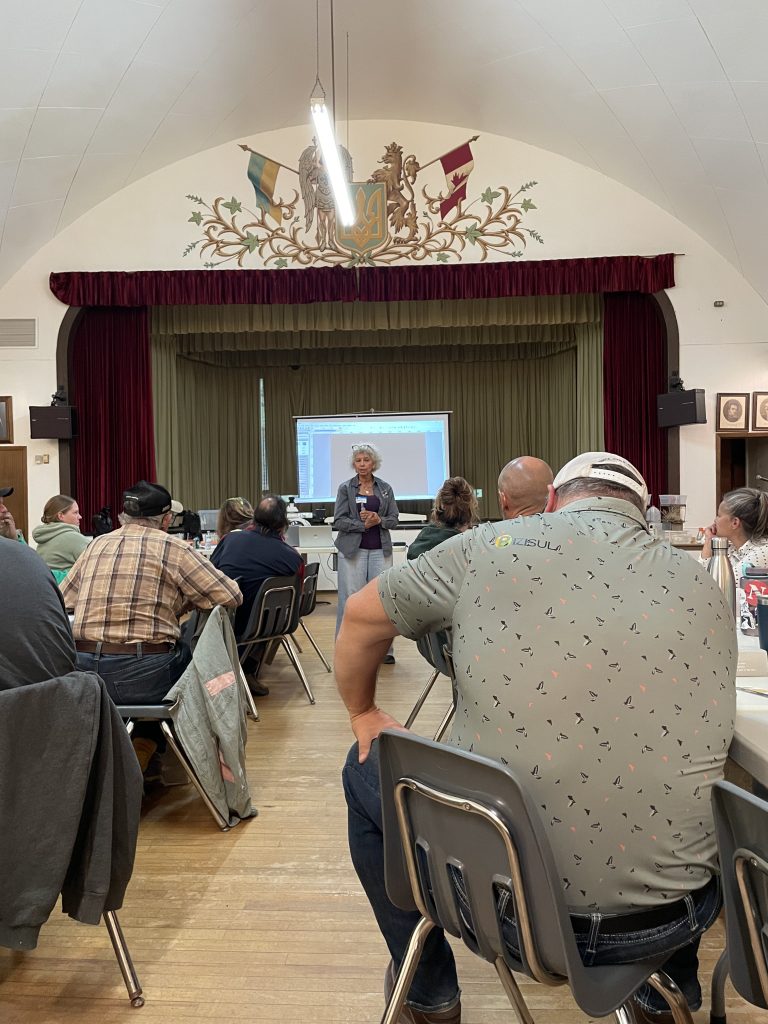
Hands-On Soil Discovery
The afternoon sessions brought soil health to life with three interactive demonstrations using real samples submitted by producers.
Soil Microbiology Live Readings
Using our most advanced microscope from the CARA Soil Health Lab, we examined live producer-submitted soil samples. Together, we discovered a variety of life forms — nematodes, rotifers, bacteria, and protozoa — right from the farmers’ fields. We also conducted a nematode extraction from a compost tea sample; interestingly, only two dead bacterivore nematodes were found in 150 mL of extract.
Soil Wet Aggregate Stability (WAS) Demo and Protocol Validation
Participants used the Soil WAS Kit to test the stability of their own soil samples and compared their results to those obtained by our lab. Results were incredibly close, ranging between 5% and 10% difference, and in several cases, matching exactly. One enthusiastic producer asked to purchase a WAS Kit for home use, and the collective excitement around the reliability of these results validated our confidence in this protocol as a practical on-farm monitoring tool.
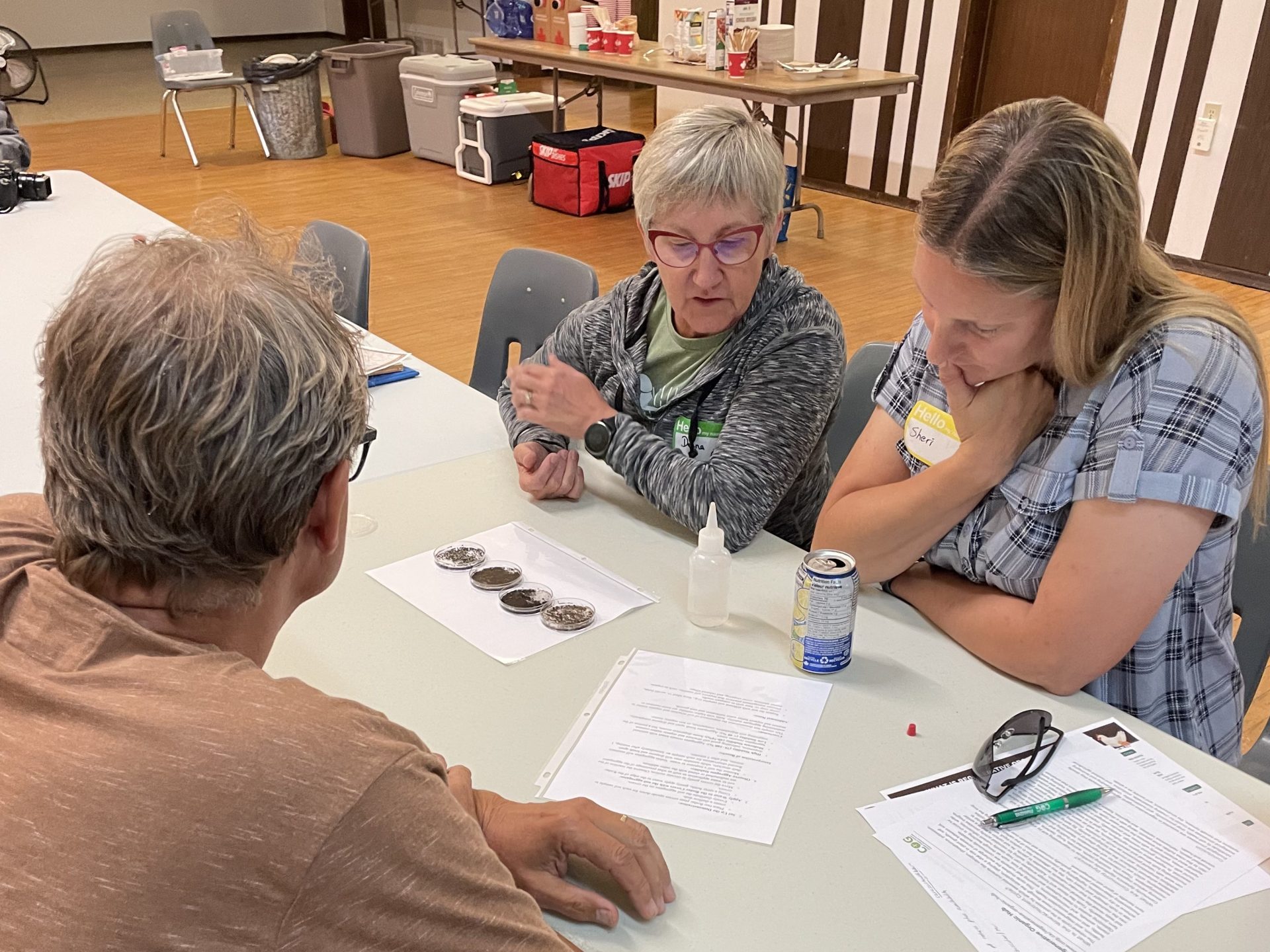
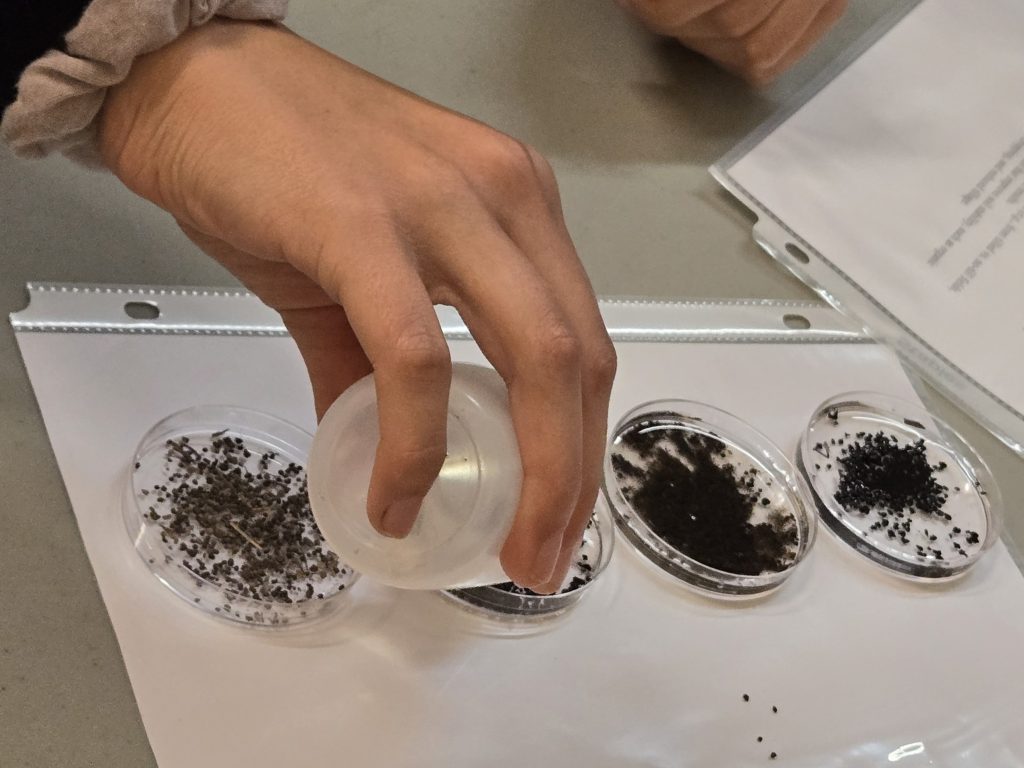
Water Infiltration Demo: A Visual Wake-Up Call
We simulated rainfall over soils collected in stainless steel bottomless boxes to observe how water behaves in different systems. The three soils represented:
- Undisturbed soil from the Yorkton, SK region (never tilled)
- A native grassland soil
- An annual cropping system (peas)
As the rain hit the surface, the results were dramatic:
- One sample caused water to run everywhere with no infiltration.
- Another allowed water to infiltrate quickly with minimal runoff.
- The third showed partial infiltration with moderate runoff.
The visuals spoke for themselves, and everyone was glued to the demonstration. You can even guess which soil belonged to which management system just from what you can see in the pictures below. It was a powerful reminder of how soil structure (aggregate stability) and land use directly affect water movement and retention.
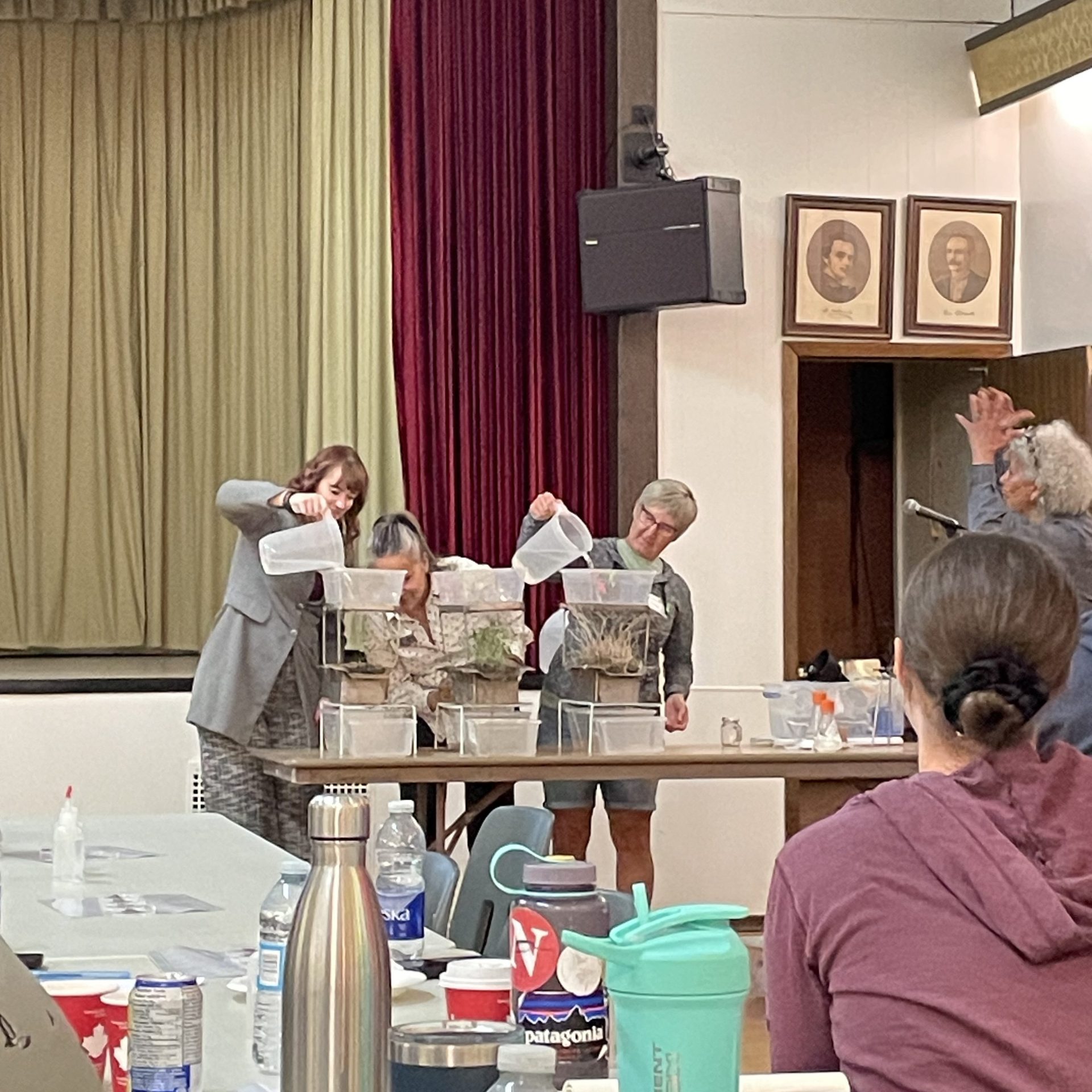
Hope for a Regenerative Organic Future
This workshop was a fantastic blend of science, hands-on learning, and community engagement. Thank
you to the ROO program and all the producers who participated, asked questions, shared stories, and
helped validate some of the tools we aim to share more widely. We’re excited to keep learning together.

